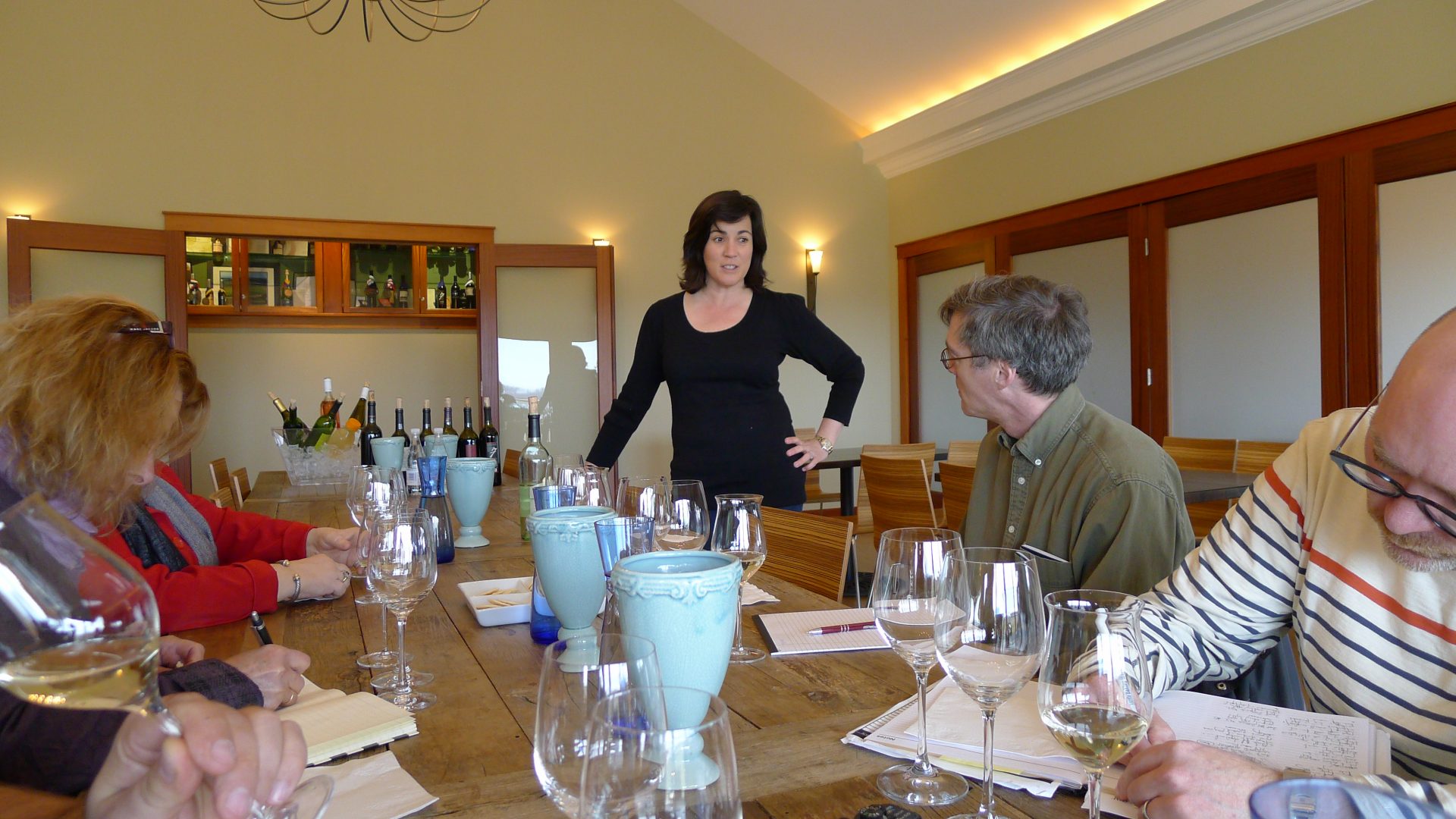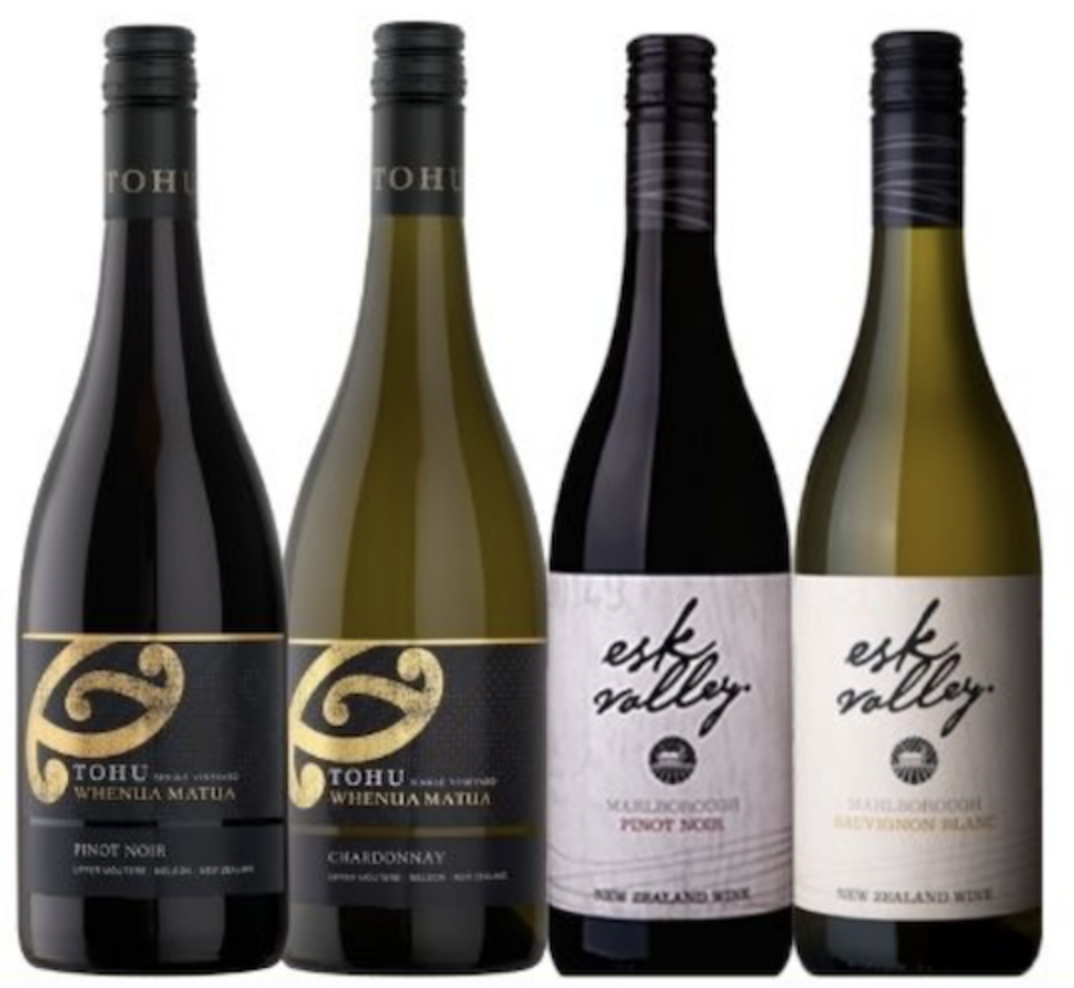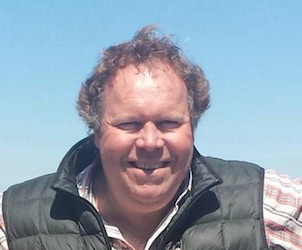Jon Bonné has had a lofty vantage point from which to view the shifts and shocks of the wine world for the past 15 years.
He was wine editor of the San Francisco Chronicle for more than a decade, and is currently senior contributing editor at PunchDrink. It’s almost too easy to draw a parallel with what’s happened among engaged wine buyers: Moving from the broad reach of a major daily to an online magazine devoted to all things alcoholic for those too young or contrary to read Wine Spectator.
In that vein, he recently released The New Wine Rules: A Genuinely Helpful Guide to Everything You Need to Know. Unlike his earlier book The New California Wine, this is a gulpable all-purpose reference manual. It’s geared to those more inclined to drink an interesting bottle than memorize facts. A great tool for the interested but tentative, it’s also entertaining enough for professionals to read with pleasure.
Bonné visited Toronto trade favourite Paris Paris in July for a book and wine event. Thanks to a thunderstorm and resulting epic flight delay, we did the following interview by phone a bit later.
Anya Spethmann: What prompted you to write this particular book now?
Jon Bonné: I had succeeded at being a fancy wine expert but felt I was still in this echo chamber. My wife works in wine as well and we talk a lot about not just nerdy things but what gets people into wine. What are the barriers to getting more people interested?
We were at lunch in San Francisco eavesdropping on the next table, a group of five or six women in their late 20s/early 30s. They’re professionals, doing well. They have money to spend and are out for a proper lunch with wine on a weekday. They were legitimately struggling to figure out what to order off the list.
So we started talking. This is the audience the entire wine industry is chasing. These are the people who are going to be drinking wine for the next 30 years. They’re somewhere people know a lot about wine. They are obviously well-educated. And they have zero guidance. No one helped get them to a place where they can make a reasonable decision ordering a wine off the list as a customer.
How do you get people to feel confident and make decisions – not as a sommelier-in-training but as an educated consumer? And do it in a way that doesn’t feel 25 years old? Most of the introductory wine books out there are very teach-y and simplistic. They don’t give you anything useful to navigate the wine world in 2018.
One of my rules of thumb was if you can Google it then it doesn’t need to be in the book. All that information is out there in the world. But none of those pieces tend to get put together in a framework. “This is how you live your life in wine.” So as someone who’s done it for a while, this is a rough roadmap to my wine brain.
AS: When I started in the industry, there were more clearly defined boundaries. Do you think it was easier to navigate then?
JB: The wine world was probably a lot smaller. All of these things were developed at a time when the wine world was much simpler. When all of the impact of these new styles of wine – natural wine, new California, new France, new Australia … None of these things were there or they were so much on the fringe that you didn’t really give them much heed. They were nothing that you’d seriously consider. It was much easier to create a simple straightforward framework.
If you look at WSET [Wine & Spirit Education Trust] or the Guild of Sommeliers, it was designed to bring people into the trade. That’s fine but it’s a fraction of the people out there buying wine. When you’re taking quizzes and doing it in a very goal-oriented way, it’s not going to be fun. It’s not meant to be. For most people who drink wine, it should be fun.
AS: Early on, I was at a very high-end restaurant and ordered a succession of bottles that caused the service staff to stop treating us as rubes. Then the beverage director came over and asked if I was in the industry. My boyfriend’s father’s face lit up. I realized at that point that there’s a power associated with being able to read a wine list. Why do you think this esoteric subject matter has so much power, especially for those with a lot of privilege?
JB: Some of it is that people feel it’s a mystery to unlock. It used to be that it was older British gentlemen who had spent their time studying claret and could then present themselves as cultured. It is this product that has a cultural depth to it. Wine is the one product – more than anything else – that has its value because of its origin. It is an agricultural product that transcends. It is this 2,000-year-plus unbroken chain of culture that says that planting one thing in one place makes it different or better or more compelling than planting it somewhere else.
The problem that I have is the flipside of what you described. It’s nice to be acknowledged, that you have the secret handshake. What I worry about more is that until you know the secret codeword, there is a sense of dismissiveness. That’s why in the book, I spend a lot of time talking about dining out and how to have a transactional relationship with your servers. Whether you know to order the secret bottle of Riesling or not, there should be ways people can navigate to something that interests and delights them. It is, in the end, transactional. You are there to give somebody money to serve you a thing you like. Which means that they have to be willing to have a conversation with anyone about the things that might please them. Wine still has this weight where there’s an expectation that you come in fully armed with all the knowledge you need. We have all had a period in our lives where we didn’t have that knowledge and we were penalized for it.
I think about a two, now three-star, I went to in France early in my professional wine career. I knew enough to know what I needed. I wasn’t going to make a wildly stupid choice. Oh my God, the level of arrogance we got. They treated us like such assholes because we were American and weren’t 50 years old. That was 15 years ago, but I don’t think the world has changed as much as we might like it to have. Except that now there’s this subset of restaurants where it used to be about ordering the big fancy bottle of wine so they know I’m serious – the Échezeaux, the Angélus. Now those places are serving Scholium Project, Sebastian Riffault, Yvon Métras. They have a completely different set of barometers of cool but you still have to reach those.
I’m glad there’s the evolution but I also think if wine is going to survive, and not fall into a kind of nerdy disrepair, it’s going to have to find a way to engage people with joy. That’s why in the book, I talk a lot about ‘drinking with joy.’ The neuroses that have historically surrounded wine have done so much damage. It has chased away a lot of people who could be great customers or professionals, but who feel we’re all spouting words at each other.
AS: Conversely, a few years ago, I was doing backflips to make a table happy while wondering, “Why aren’t these people having fun?” Turns out it was a couple telling their children they were getting divorced. That was most informative about true hospitality. The job is not always to make the customer happy, it could be to provide comfort in difficult moments.
JB: Begging the question, what wine do you serve when you tell the kids you’re getting divorced?
AS: Exactly! I’m a big believer in matching the occasion rather than food. So, rapid-fire pairings for:
A superhero movie.
JB: You’re going to need a very large bottle of Manzanilla sherry. Drink it fast. You might, frankly, want a bourbon chaser.
AS: Sunday in the park.
JB: Kabinett Riesling.
AS: A good fiction book.
JB: I really don’t drink when I’m reading but maybe a slightly off-dry pét-nat.
AS: A good non-fiction book. (Though given the news lately, I’d probably go straight vodka.)
JB: I would have to go with one of the Friulians. Damijan or Radikon. Vini di meditazione. You want a wine that’s not going to bring you down. That you’re not going to drink super-fast. You’ve got a lot of cognition going on, so I don’t think you want something carefree. Depending on the book, you might want straight vodka but that’s going to be a really short reading session. I mostly read non-fiction and you want a wine that’s a little bit more anchored. That has an intellectual side to it.
AS: It seems lately that, as in life, there isn’t a lot of centrism in wine. It’s either all-natural, all-the-time, or old guys with a lot of money who only want 100-points. Is there a middle way? If so, how would you translate it?
JB: The two ends are going to evolve. Old dudes wanting 100-point wine is going to phase out on its own. It’s a finite market built around a very specific premise. I don’t see a full replacement for that. Some of it is that their kids will do anything to not drink their parents’ wines. It’s also that their kids’ generation doesn’t have that disposable income. Maybe people do on Wall Street, but they’re buying Burgundy now. They have different benchmarks for status than there were in the ‘80s, ‘90s and even early 2000s. So that side of it, that extreme, is going to change.
The natural thing – I could be wildly wrong but I think that’s going to mellow. It’s so much a question of fashion. The good pieces of it will emerge. It’s interesting that the segment that I called The New California has now become the California wines most people want to serve in their restaurants. A lot of the fringe-y stuff in France has now become the French wines that are really gaining traction. A Beaujolais list is not a weird thing anymore.
I think the middle is going to be artisan wines, made well, that are fun to drink young. Most wine regions in the world are starting to gravitate there. It’s not the money you get from following that ‘90s Napa model of $500 a bottle but it’s sustainable. It’s making amounts of wine that are human-scaled and that people want to drink. You can make it and sell it and people will buy it. Frankly, people who want to make big fancy wines – with the exception of maybe Burgundy and Piedmont – have chased themselves out of a growth market. They’re going to find really rich people in some other country to buy it but that’s not enough to build a sustainable business.
I had some form of this conversation when I was in Ontario. If you got 10 good wineries to make a Cabernet Franc you could get onto U.S. shelves under 30 bucks a bottle, you’d kill it. That’s the wine everyone wants to drink right now. You’ve seen it in California – even with a price premium, people will drink and rebuy those wines. Are they fancy? Are they the ones with the big medals around their necks? Who cares? They’re eminently drinkable. That’s where people’s heads are at. They want to drink wine regularly. They want to be able to afford it and feel they’re making good, ethical choices. Every time I see people gravitating to making wines like that, they’re succeeding.
AS: I love that you called out gendered terms in The New Wine Rules. Slutty as a wine descriptor, really?
JB: It pisses me off. There are better ways to talk about it. More often than not, it’s the language of people who are just a bit lazy. Or who are revealing strange biases that are between them and their therapist.
AS: Do you think there’s something specific about beverage alcohol that keeps us behind the rest of the world in terms of gender equity?
JB: It’s an industry that has this enormous gap that people are hesitant to talk about because nobody’s going to look very good. The product is largely still made by men, especially in the New World, and largely sold by men. Although particularly in California, when women get into the industry they end up more often than not in sales and marketing. Yet the majority of the consumers are women. This is a complicated thing for me to navigate as someone who, on paper, is certainly part of the problem. Which is to say I’m a white man – as a number of readers certainly pointed out after I wrote the Unwoke column .
If I had to highlight one thing that is the most complicated and difficult piece to tackle: It’s not just how to get women into the industry, but into the parts of the industry that get the attention. Punch did a piece a few years ago about why there are no “rebel” women winemakers. Is that a question of gender or is it that the wine industry can only see transformation and change through a male perspective right now? I don’t want to believe that’s the case but there’s solid evidence to back it up, which I find frustrating.
Take Champagne as an example. I love all of the change that’s happening but it’s hard to find a woman who’s making great, small-production Champagne and getting attention for it. There’s Marie Courtin, Valérie Frison… My wife sells probably more grower Champagne than anyone else in the United States but even her portfolio is almost entirely male. It’s a region that historically has had a lot of female power all the way back to Veuve Clicquot. There have been women who have run big Champagne houses. And there is a lot of importance to the business side of the industry. But the wine world doesn’t progress if it’s a lot of women selling wine made by men.
AS: Let’s say there’s a wine that you love – one of those bottles that takes you to a quiet, happy place. Then you find out the wine was made by someone who voted for Trump or Roy Moore? What do you do with it?
JB: What do you physically do with the bottle you’ve already bought? I don’t know that there’s a need to punish yourself for things you didn’t know at the time.
I do spend a lot of time pulling French election records. I was curious to see Pouilly-sur-Loire – they’re a little Trumpy and first round Le Pen absolutely won. I wanted to write about that because people who are all up on the new hipster side of the Loire should be aware of this. It’s not the place you think it is.
It’s completely fair to judge winemakers as you would anyone else. I got into a long thing about this with an importer, who didn’t like that I called one of his producers out by name. He’s in Burgundy and wants to make natural Burgundy. Other people have done that. But I don’t think he’s respectful of the humility required to make wine in a place where people have been growing it for 1,000-plus years. We got into a long thing about, ‘Can you judge a winemaker morally?’ Yes, I fucking well can. You can dislike that I do it as a critic, but ultimately consumers will anyway. They make that choice when it comes to the restaurants they eat in, to the food they buy. As a journalist, you have absolutely every right to talk about that. Commerce is political now. It just is.
But, look, am I not ever going to drink that wine? Maybe I’ll drink it and just not go there again. Or I might bring it to a dinner party of people I don’t particularly like.
This interview has been edited for length and clarity.
 An academic advising fluke led Anya Spethmann to take introduction to oenology and viticulture instead of organizational behaviour. She hasn’t looked back since and has studied, sold and thought about wine in various capacities for more than 10 years.
An academic advising fluke led Anya Spethmann to take introduction to oenology and viticulture instead of organizational behaviour. She hasn’t looked back since and has studied, sold and thought about wine in various capacities for more than 10 years.








